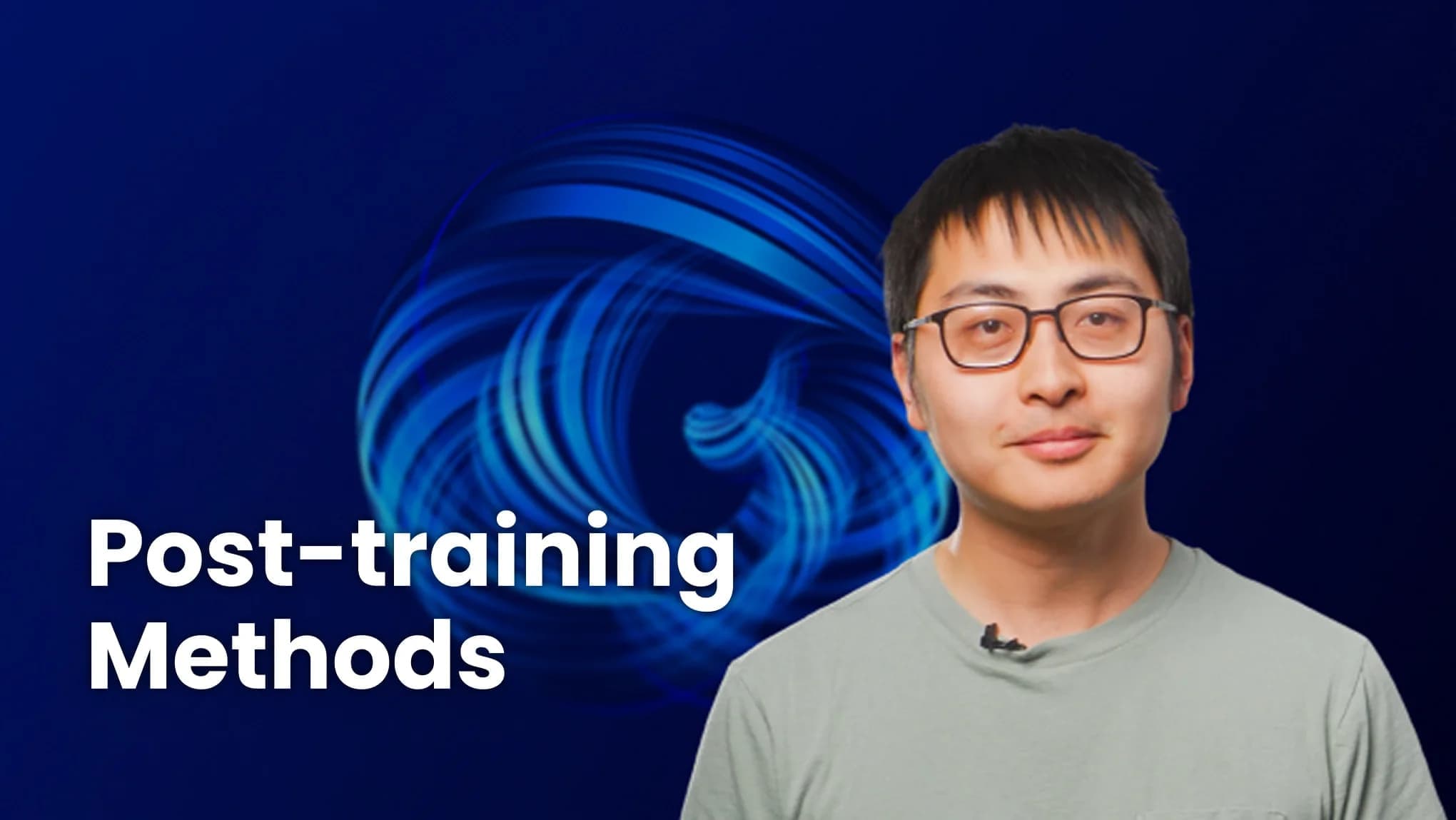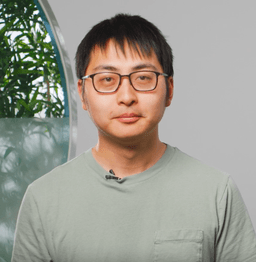Post-training of LLMs
Instructor: Banghua Zhu

- Intermediate
- 1 Hour 16 Minutes
- 9 Video Lessons
- 3 Code Examples
- Instructor: Banghua Zhu
What you'll learn
Understand when and why to use post-training methods like Supervised Fine-Tuning (SFT), Direct Preference Optimization (DPO), and Online Reinforcement Learning.
Learn the concepts underlying the three post-training methods of SFT, DPO, and Online RL, their common use-cases, and how to curate high-quality data to effectively train a model using each method.
Download a pre-trained model and implement post-training pipelines to turn a base model into an instruct model, change the identity of a chat assistant, and improve a model’s math capabilities.
About this course
Learn to post-train and customize an LLM in this short course, “Post-training of LLMs,” taught by Banghua Zhu, Assistant Professor at the University of Washington, and co-founder of NexusFlow.
Before a large language model can follow instructions or answer questions, it undergoes two key stages: pre-training and post-training. In pre-training, it learns to predict the next word or token from large amounts of unlabeled text. In post-training, it learns useful behaviors such as following instructions, tool use, and reasoning.
Post-training transforms a general-purpose token predictor—trained on trillions of unlabeled text tokens—into an assistant that follows instructions and performs specific tasks.
In this course, you’ll learn three common post-training methods—Supervised Fine-Tuning (SFT), Direct Preference Optimization (DPO), and Online Reinforcement Learning (RL)—and how to use each one effectively. With SFT, you train the model on input-output pairs with ideal output responses. With DPO, you provide both a preferred (‘chosen’) and a less preferred (‘rejected’) response, and train the model to favor the preferred output. With RL, the model generates an output, receives a reward score based on human or automated feedback, and updates the model to improve performance.
You’ll learn the basic concepts, common use-cases, and principles for curating high-quality data for effective training in each of these methods. Through hands-on labs, you’ll download a pre-trained model from HuggingFace and post-train it using SFT, DPO, and RL to see how each technique shapes model behavior.
In detail, you’ll:
- Understand what post-training is, when to use it, and how it differs from pre-training.
- Build an SFT pipeline to turn a base model into an instruct model.
- Explore how DPO reshapes behavior by minimizing contrastive loss—penalizing poor responses and reinforcing preferred ones.
- Implement a DPO pipeline to change the identity of a chat assistant.
- Learn online RL methods like Proximal Policy Optimization (PPO) and Group Relative Policy Optimization (GRPO), and how to design reward functions.
- Train a model with GRPO to improve its math capabilities using a verifiable reward.
Post-training is one of the most rapidly developing areas of LLM training.
Whether you’re looking to create a safer assistant, fine-tune a model’s tone, or improve task-specific accuracy, this course gives you hands-on experience with the most important techniques shaping how LLMs are post-trained today.
Who should join?
This course is for AI builders who want to adapt language models for specific tasks or behaviors. If you’re familiar with LLM basics and ready to go beyond pre-training, this course will help you understand and apply the key techniques that make LLMs truly useful.
Course Outline
9 Lessons・3 Code ExamplesIntroduction
Video・3 mins
Introduction to Post-training
Video・9 mins
Basics of SFT
Video・8 mins
SFT in Practice
Video with code examples・13 mins
Basics of DPO
Video・7 mins
DPO in Practice
Video with code examples・9 mins
Basics of Online RL
Video・11 mins
Online RL in Practice
Video with code examples・11 mins
Conclusion
Video・2 mins
Quiz
Reading・1 min
Instructor

Banghua Zhu
Assistant Professor at the University of Washington, Principal Research Scientist at Nvidia, Co-founder of Nexusflow
Post-training of LLMs
- Intermediate
- 1 Hour 16 Minutes
- 9 Video Lessons
- 3 Code Examples
- Instructor: Banghua Zhu
Course access is free for a limited time during the DeepLearning.AI learning platform beta!
Want to learn more about Generative AI?
Keep learning with updates on curated AI news, courses, and events, as well as Andrew’s thoughts from DeepLearning.AI!
